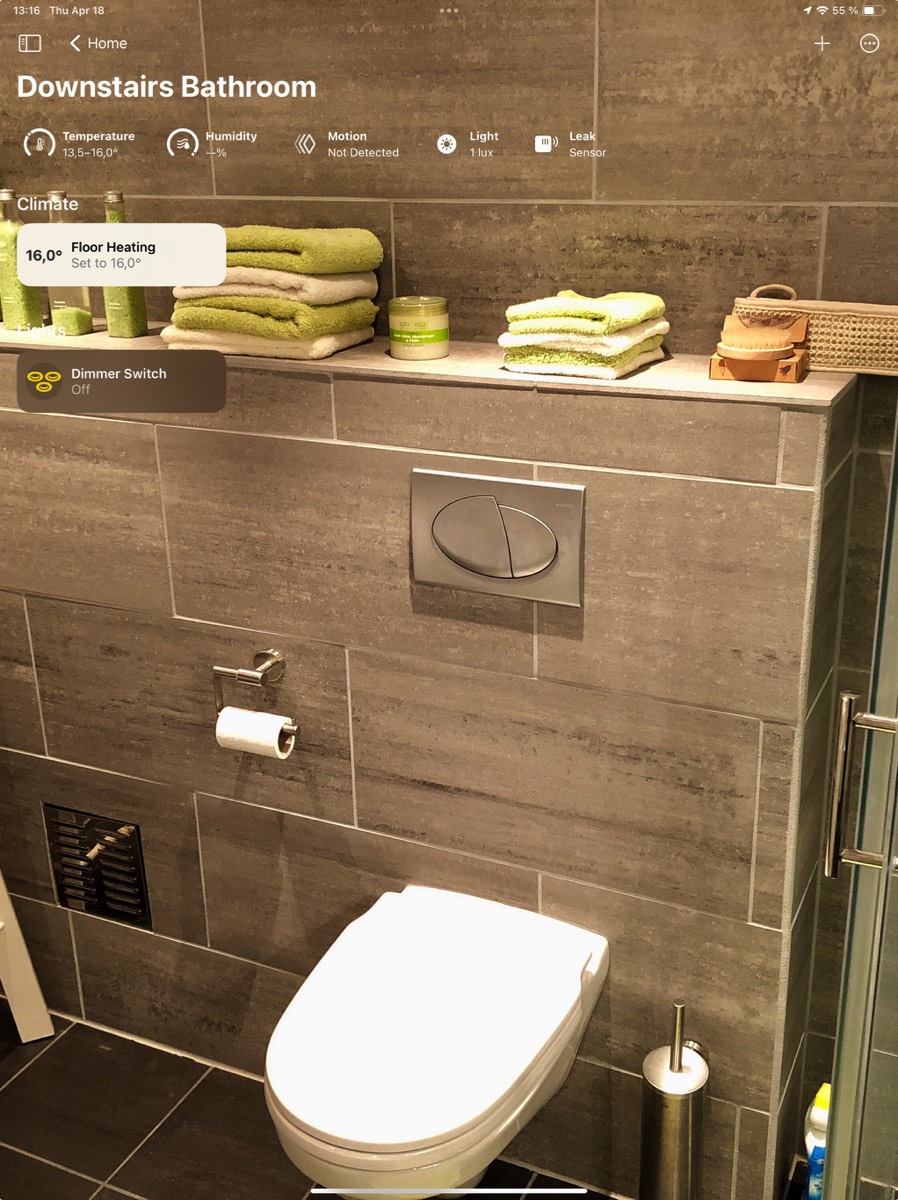Bathroom Downstairs
This room contains solutions for the following systems (notice that on phones, the table might only be displayed in landscape mode):
| System Type | Components |
|---|---|
| Lighting |
|
| Climate Control |
|
| Home Entertainment | None |
| Security and Alarm |
|
| Pet Care | None |
| Control and Automation | None |
Description of the solutions in this room
This is a bathroom primarily used by guests and has the following solutions and has some less complex solutions for control of lighting, climate control of underfloor heating, and monitoring for leakages. The lighting in this bathroom consists of a number of downlights installed in the ceiling and integrated LED lights in a shelf above the mirror, see pictures below.
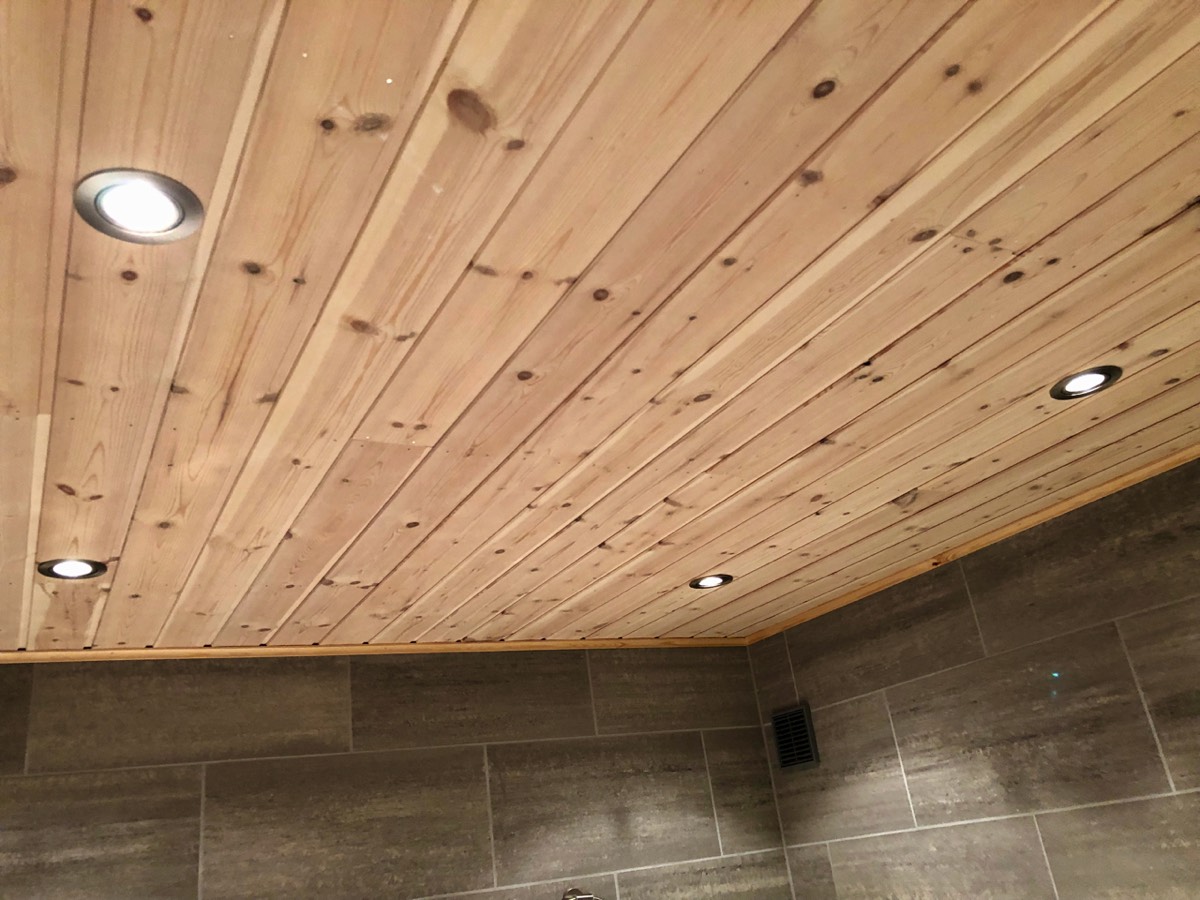
The lights above the mirror

These are today controlled by a Namron smart, two-pole dimmer switch, but there have been a couple of other setups here earlier. Originally, the lights in the “box” above the mirrors consisted of spots with 12 V halogen bulbs and an old-fashioned light tube, neither of which could be dimmed. Therefore, the original light control was set up so that a “dumb” double pole switch turned on/off all of the lights in the room, while a “dumb” dimmer adjusted the light level of the downlights. First, a smart wall switch was installed, in addition to the old double pole wall switch, so that all the lights could be turned on/off using this switch and thus also include them in automations. This worked reasonably well, but we missed the opportunity for “smart” dimming of all the lights, in order to create a routine for lower-level night light in case of motion during night. For a long time, there was no feasible solution for this, but eventually Namrom launched a smart Zigbee dimmer which is both double pole and works with Homey (and from there in Apple Home). That meant that the old double pole switch could be replaced by the Namron dimmer and the old dimmer be removed completely. At the same time, the light tube was replaced by a LED version that can be dimmed (this required som rewiring of the fixture) and the halogen spots replaced by LED spots with a dimmable transformer.
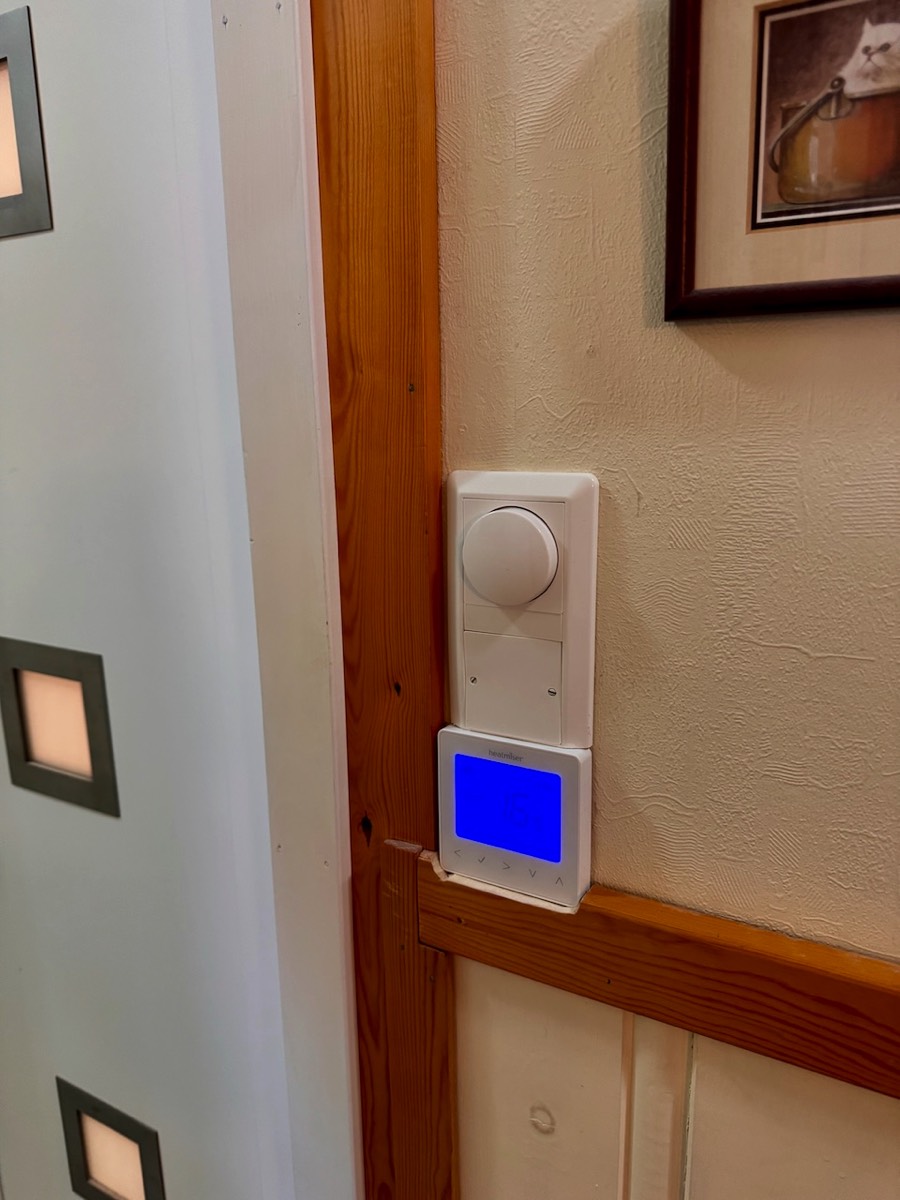
The programming is very simple; all lights turn on at full level when motion is detected (and automatically off after 15 minutes without any movement) if the wall lamp in the hallway outside the bathroom is on (which means we have not gone to bed for the night), while if this wall lamp is off, the light only turns on at 10% light level.
There is strictly speaking nothing “smart” about this, but a rather elegant lighting solution is a simple LED light that is installed on the hinges of closet doors, see pictures below. The lights turn on/off when you open/close the doors.
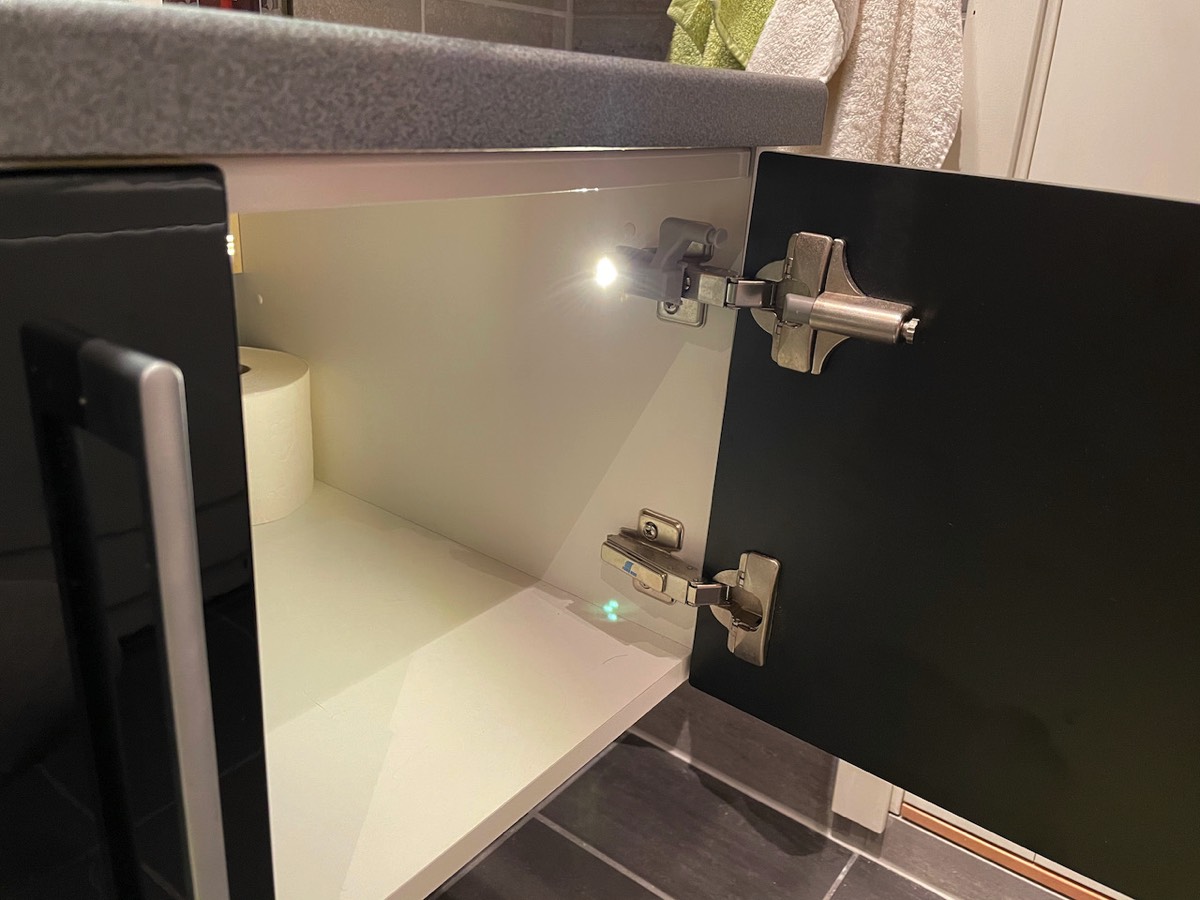
LED lights installed on closet door hinges
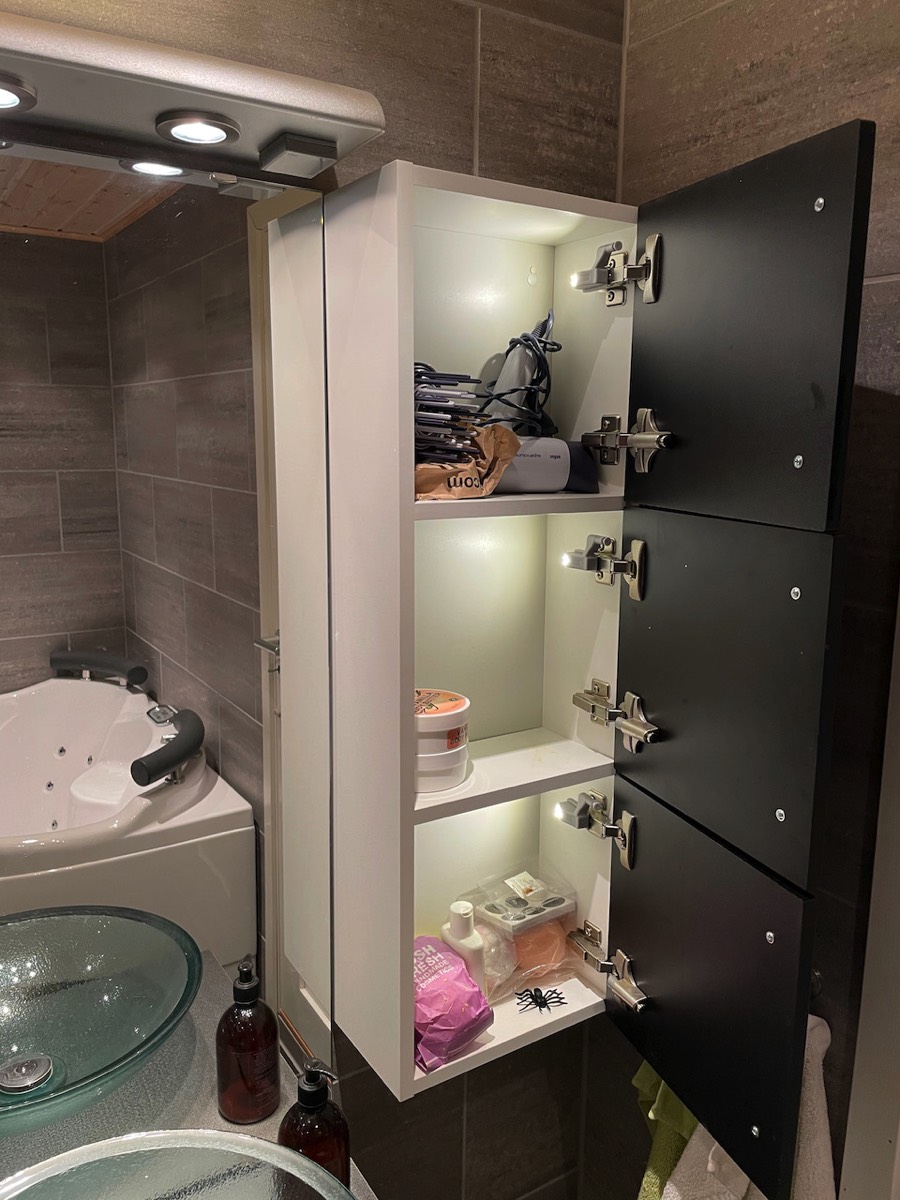
With regard to climate control, this bathroom has the sam Heatmiser neoStat-e thermostat as we have installed elsewhere in the house. Also here, the thermostat is located outside the door to the bathroom, see picture above, but with a floor sensor underneath the tiles in the bathroom, this works perfectly.
Finally, in the category of security & alarm, we have two leakage sensors in this room, one from Sonoff and one from Verisure (also here two sensors the Verisure sensor does not port over to Apple Home). This bathroom has a wall-mounted toilet with the water cistern built into a “box”, with access to the box through an inspection hatch. Hopefully, there is little likelihood of a leak inside this box, but instead of having to conduct regular inspections (or risk an undetected leak), it is useful to monitor this through a sensor. There are many leakage sensors available, we went with a Sonoff sensor, since it is not only a “point sensor”, but has a long cable which can be strung around inside the cavity of the box.

The devices in the Home app room view
